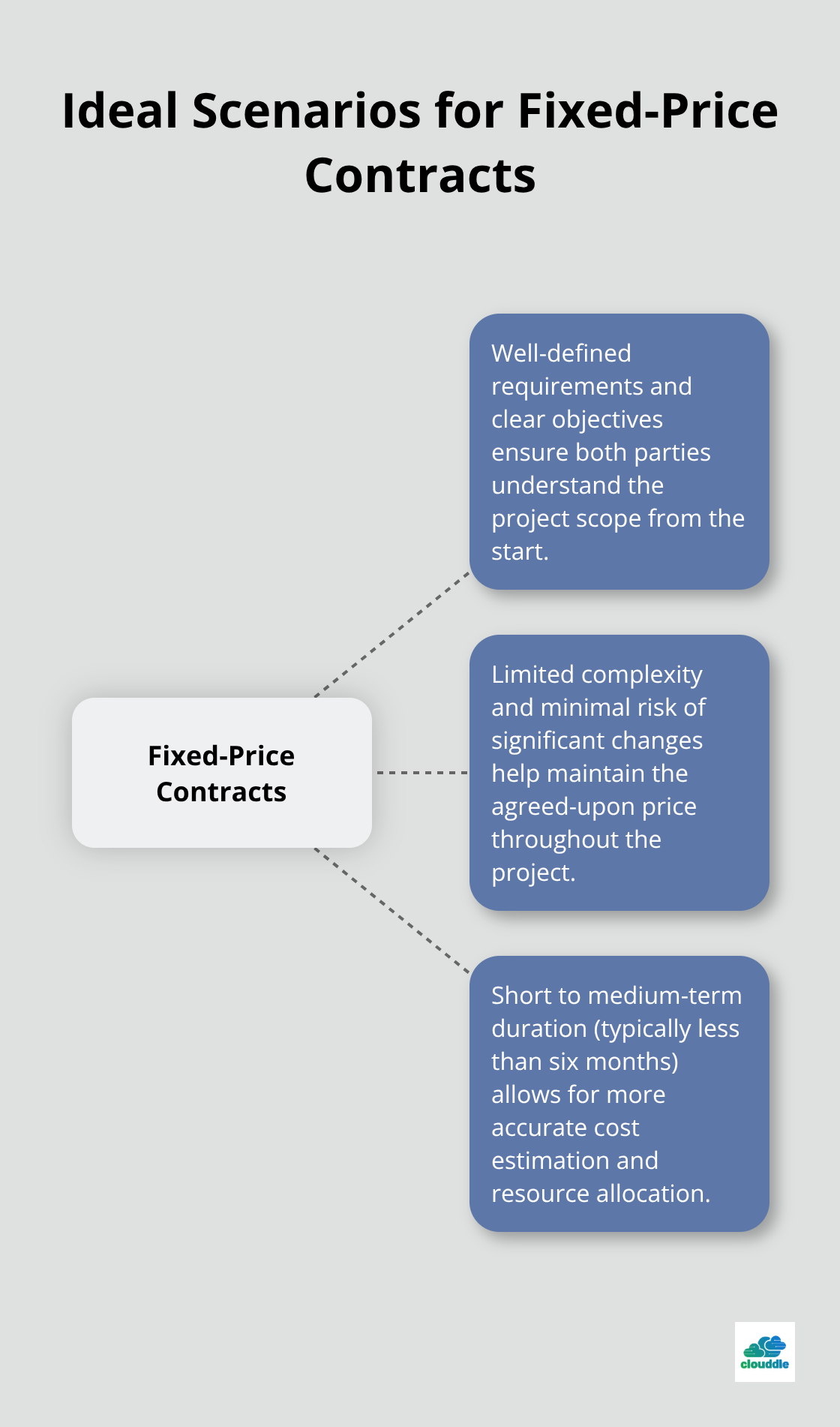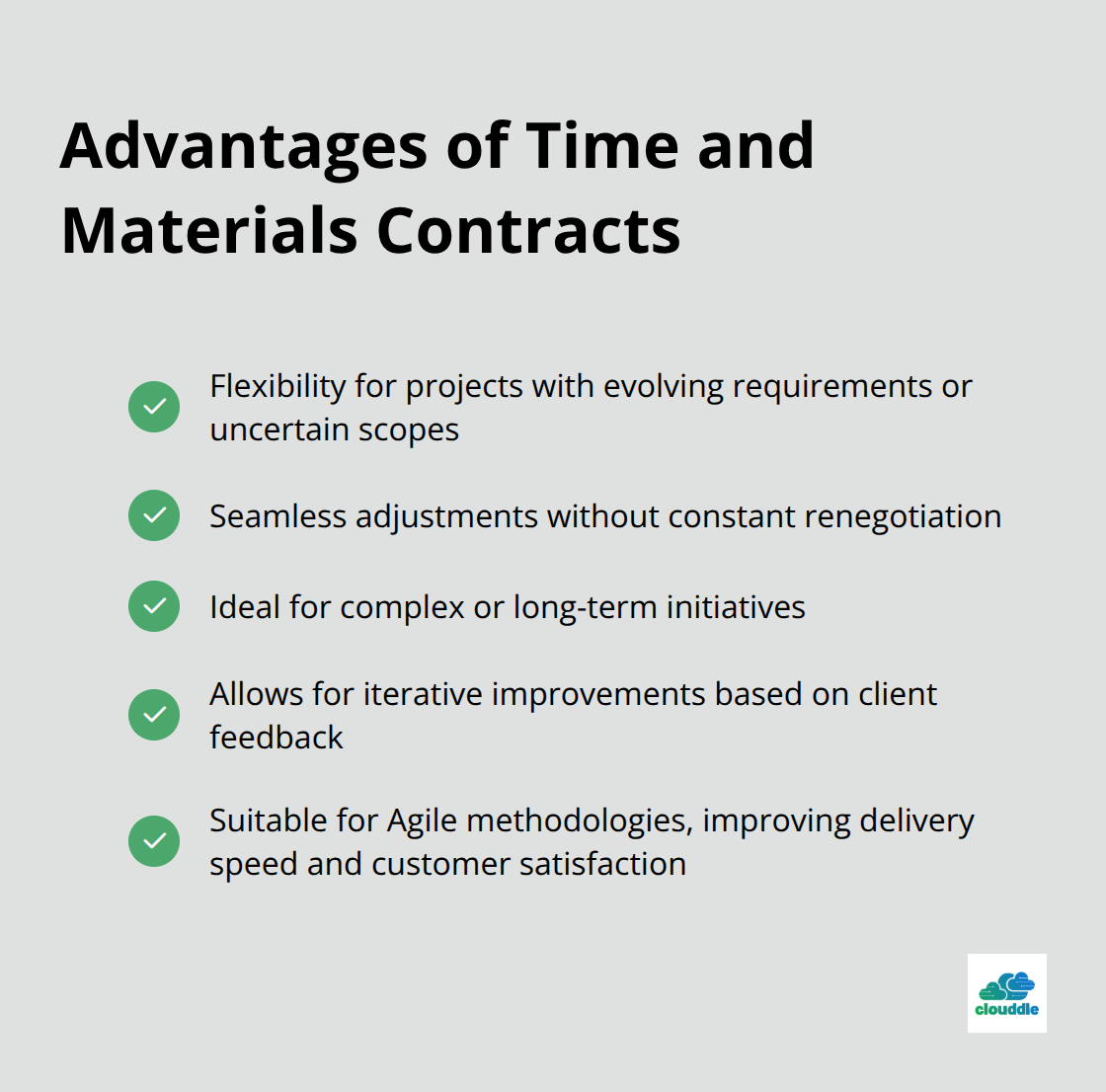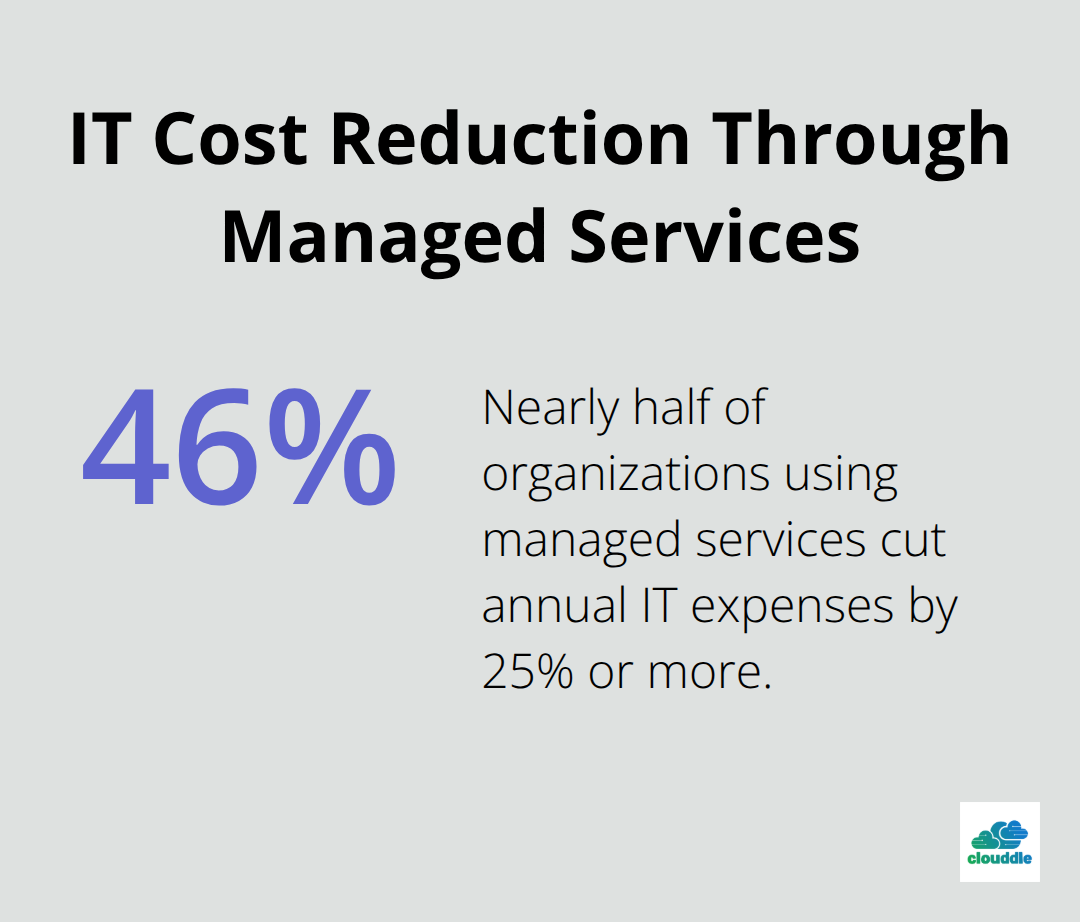At Clouddle, we understand the importance of choosing the right IT contract for your business needs.
Understanding the various types of IT contracts is essential for successful project management and long-term partnerships.
This blog post will explore three common IT contract types: fixed-price, time and materials, and managed services agreements. We’ll discuss their key features, advantages, and best use cases to help you make informed decisions for your IT projects.
What Are Fixed-Price Contracts?
Definition and Key Characteristics
Fixed-price contracts are a popular choice in the IT services industry. These agreements establish a predetermined cost for a specific scope of work. The service provider commits to complete the project for a set fee, regardless of the actual time or resources used. This approach provides budget certainty for clients and encourages efficiency for providers.
Advantages for Clients
The primary advantage for clients is financial predictability. Clients know exactly what they’ll pay upfront, which simplifies budgeting and financial planning. This benefit proves particularly valuable for businesses with strict budget constraints or those who want to avoid cost overruns.
A study on the impact of project management standardization on project effectiveness explored the practices of three companies. While specific statistics were not provided, the research highlighted the potential benefits of standardized project management practices, which can include the use of fixed-price contracts.
Benefits for Service Providers
Service providers can potentially earn higher profits if they complete the project efficiently. This contract type also promotes thorough planning and risk assessment before project initiation, often resulting in smoother execution.
Mitigating Risks
While fixed-price contracts offer numerous benefits, they’re not without risks. Scope creep (where project requirements expand beyond the original agreement) is a common issue. To mitigate this, try:
- Detailed scope definition: Clearly outline all deliverables, timelines, and acceptance criteria.
- Change management process: Establish a formal procedure for handling scope changes and associated costs.
- Regular communication: Maintain open dialogue between client and provider to address potential issues early.
Ideal Scenarios for Fixed-Price Contracts
Fixed-price contracts work best for projects with:
- Well-defined requirements and clear objectives
- Limited complexity and minimal risk of significant changes
- Short to medium-term duration (typically less than six months)

For example, a website redesign project with specific features and a set launch date would be an ideal candidate for a fixed-price contract.
As we explore the next contract type, it’s important to note that while fixed-price agreements offer stability, they may not suit all project types. Time and Materials (T&M) contracts provide an alternative approach for projects with evolving requirements or longer durations.
What Are Time and Materials Contracts?
Definition and Structure
Time and materials contracts represent a flexible approach to IT project management. Unlike fixed-price agreements, T&M contracts bill clients based on the actual time spent and materials used during the project. This model proves particularly useful for projects with evolving requirements or uncertain scopes.
In a T&M contract, the service provider charges an agreed-upon hourly rate for labor and the cost of materials used. This structure allows for adjustments as the project progresses, making it ideal for complex or long-term initiatives.
Advantages for Evolving Projects
T&M contracts excel in scenarios where project requirements will likely change. For instance, in software development (where client feedback often leads to iterative improvements), T&M contracts allow for seamless adjustments without the need for constant renegotiation.

Research has shown that Agile outperforms traditional methods in terms of the delivery speed of projects and customer satisfaction.
Cost Management Strategies
While T&M contracts offer flexibility, they can lead to budget overruns if not managed properly. Here are some effective cost control measures:
- Set a not-to-exceed limit: Establish a maximum budget to prevent unexpected costs.
- Implement regular reporting: Require detailed timesheets and material usage reports to track progress and expenses.
- Use project management software: Tools like Jira or Asana can help monitor time spent on tasks and overall project progress.
Ideal Scenarios for T&M Contracts
T&M contracts suit best for:
- Projects with unclear or evolving requirements
- Long-term partnerships or ongoing support services
- Situations where the client wants more control over the project direction
For example, T&M contracts work well for managed IT services. This allows clients to scale their IT support as needed, ensuring they only pay for the services they use.
Statistical Support for T&M Effectiveness
T&M contracts provide the flexibility needed in today’s fast-paced IT landscape. However, they require active management and clear communication between the client and service provider to ensure success. Next, we’ll explore another popular contract type: Managed Services Agreements, which combine elements of both fixed-price and T&M models.
What Are Managed Services Agreements?
Comprehensive IT Support
Managed Services Agreements (MSAs) have gained popularity in the IT industry. These contracts offer businesses a comprehensive approach to IT management, combining elements of both fixed-price and time and materials models.
MSAs typically cover a wide range of IT services, including network monitoring, cybersecurity, cloud management, and help desk support. A hotel chain might engage a managed service provider to handle all aspects of their IT infrastructure, from guest Wi-Fi to back-office systems.
The global managed services market size was estimated at USD 335.37 billion in 2024 and is anticipated to grow at a CAGR of 14.1% from 2025 to 2030. This growth highlights the increasing reliance on managed services across various industries.
Flexible Pricing Models
MSAs often use tiered pricing structures based on the level of service required. A basic package might include network monitoring and maintenance, while higher tiers could add advanced cybersecurity measures or 24/7 on-site support.
Service Level Agreements (SLAs) play a key role in MSAs. These documents outline specific performance metrics, response times, and availability guarantees. An SLA might stipulate that critical issues must be addressed within 30 minutes, with a 99.9% uptime guarantee for key systems.
Benefits for Businesses
One of the primary advantages of MSAs is predictable IT costs. Instead of dealing with fluctuating expenses for break-fix services, businesses can budget for a fixed monthly fee. This approach allows for better financial planning and can often lead to cost savings in the long run.
A study found that nearly half (46 percent) of organizations using managed services have cut their annual IT expenses by 25 percent or more. This reduction stems from improved efficiency, reduced downtime, and the ability to leverage the provider’s expertise and resources.

Access to Expertise and Technology
MSAs provide access to a broader range of skills and technologies than most companies could maintain in-house. This proves particularly valuable for small to medium-sized businesses that may not have the resources to employ a full IT department.
For industries with strict regulatory requirements (such as healthcare or finance), managed service providers can offer valuable compliance expertise. They can implement and maintain systems that adhere to standards like HIPAA or PCI DSS, reducing the risk of costly violations.
Choosing the Right Provider
To select an MSA provider that aligns with your business needs, try to find a company with experience in your industry and a track record of reliable service. Look for providers that offer tailored solutions for your specific sector, ensuring you receive industry-specific expertise and support.
Final Thoughts
We explored three common types of IT contracts: fixed-price, time and materials, and managed services agreements. Each contract type offers unique advantages for different project scenarios. The right contract will help you maximize the value of your IT investments and drive your business forward.
Clear communication and regular reviews are essential for successful IT partnerships. You should establish shared understanding of project scope, deliverables, and timelines. As your business evolves, your IT needs may change, requiring adjustments to your contracts.
At Clouddle, we understand the complexities of IT contracts and offer flexible solutions tailored to your specific needs. Our Network as a Service (NaaS) model combines networking, entertainment, and security services without requiring initial investment. This approach allows businesses to focus on growth while we handle the technical details.


